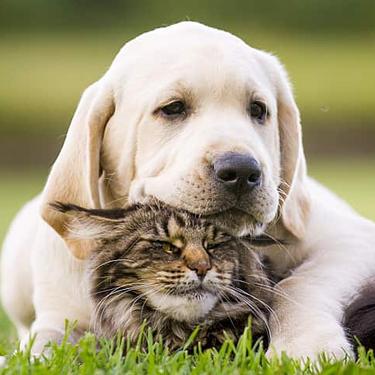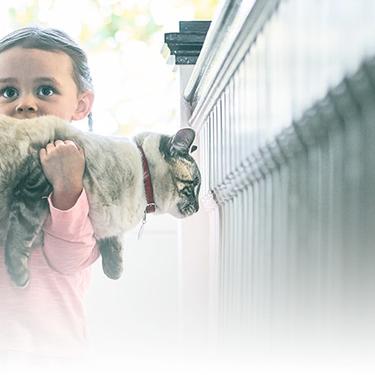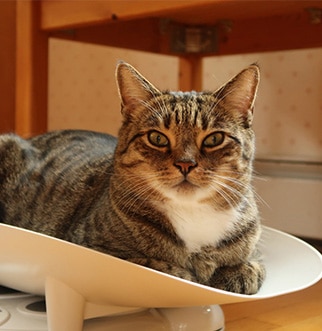
-
Find the right food for your petTake this quiz to see which food may be the best for your furry friend.Find the right food for your petTake this quiz to see which food may be the best for your furry friend.Featured products
 Hill's Science Diet Adult 7+ Senior Vitality Small & Mini Chicken & Rice Recipe Dog Food
Hill's Science Diet Adult 7+ Senior Vitality Small & Mini Chicken & Rice Recipe Dog FoodImproves everyday ability to get up & go
Shop Now Puppy Large Breed Chicken & Brown Rice Recipe
Puppy Large Breed Chicken & Brown Rice RecipeVital nutrients to support 5 essential building blocks for lifelong health
Shop Now Puppy Lamb Meal & Brown Rice Recipe
Puppy Lamb Meal & Brown Rice RecipeVital nutrients to support 5 essential building blocks for lifelong health
Shop NowFeatured products Adult Indoor Chicken Recipe Cat Food
Adult Indoor Chicken Recipe Cat FoodSupports energy level and beautiful fur in indoor cats
Shop Now Adult Sensitive Stomach & Skin Cat Food
Adult Sensitive Stomach & Skin Cat FoodHighly digestible food that is gentle on the stomach. Nourishes skin & promotes lustrous fur.
Shop Now Adult 7+ Chicken Recipe Cat Food
Adult 7+ Chicken Recipe Cat FoodSupports energy level and beautiful fur in mature cats
Shop Now -
Dog
- Dog Tips & Articles
-
Health Category
- Weight
- Food & Environmental Sensitivities
- Urinary
- Digestive
- Joint
- Kidney
-
Life Stage
- Puppy Nutrition
- Adult Nutrition
Cat- Cat Tips & Articles
-
Health Category
- Weight
- Skin & Food Sensitivities
- Urinary
- Digestive
- Kidney
-
Life Stage
- Adult Nutrition
Featured articles Pet Food Storage Tips
Pet Food Storage TipsDiscover how and where to store your dry, as well as canned, dog and cat food. Learn how to find the "best before" dates on all Hill's pet food packaging.
Read More Water
WaterDiscover why water is the most important nutrient for your dog or cat to live a healthy life. Find out how much water your pet should consume each day.
Read More The Incredible Science Behind Your Pet's Microbiome
The Incredible Science Behind Your Pet's MicrobiomeLearn what a pet's microbiome is, how it contributes to your pet's gut & overall health, and why nutrition is important in maintaining healthy microbiomes.
Read More -


Liver disease in cats is among the most common problems affecting cats' internal organs, and every pet parent should be aware of how these issues can affect their four-legged friend. Learn how cat parents can intervene in time to improve cats' quality of life or, with a veterinarian's help, potentially cut off the disease outright.
The Role of the Liver
Your cat's liver (and yours) is nestled between the lungs and the stomach. It's a complex organ that is a component of several major body systems. These are its major functions:
- It helps break down nutrients coming in through the digestive system.
- It detoxifies the body by breaking down incoming toxins carried by the blood.
- It makes useful proteins that aid in blood clotting.
- It stores essential nutrients like vitamins, minerals, sugars and fats.
- It serves an immune system function by capturing invaders and neutralizing them.
- It plays a metabolic role by helping regulate blood sugar (glucose).
It may seem counter-intuitive, but not all liver disease in cats originates in the liver. Sometimes it's a faraway infection or cancer that can lead to feline liver diseases. Those that start in the liver are termed primary while those that originate elsewhere are considered secondary. Hepatitis (hepatic is the term for any condition having to do with the liver, and -itis means inflammation) is the name for any swelling of the liver. In cats, its causes are many and varied.

What Causes Liver Disease in Cats?
Liver problems can have a range of causes. Some issues can be prevented by taking certain steps to keep your cat healthy, but others can appear with little warning.
If a cat eats certain toxins, like acetaminophen (i.e., Tylenol), plants, household chemicals and prescription drugs (among others), it may lead to a liver condition called toxic hepatopathy. Hunting critters that find their way into your house can also cause problems. In places where lizards roam (like South Florida or Central and South America), cats who like a little reptilian snack now and then can get a parasite called a liver fluke that lodges and grows in the liver. These can lead to inflammation, bacterial infections, abscesses and other disruptions of the liver's function. The parasitic infection of toxoplasmosis can also cause liver problems, Cornell University College of Veterinary Medicine notes.
Hepatic lipidosis or "fatty liver disease," is perhaps the most well-known among liver diseases in cats. According to the Cornell Feline Health Center, it happens when a cat suddenly stops eating and the body sends signals to start using the fat stored throughout the body. If this happens quickly and the cat is overweight or obese, fat can flood the bloodstream and settle in the liver, hindering its normal functions. This is yet another reason why helping your fur baby maintain a healthy weight is critical.
Cholangitis is an often idiopathic (unexplained) inflammation of the bile ducts (or gallbladder). When it involves the liver tissue itself, vets call it cholangiohepatitis, notes the Cornell Feline Health Center. The causes are often related to viruses or bacteria, but in cats, a sensitivity of the liver can predispose it to inflammation. Why some feline livers are prone to swelling is often as mysterious as our cats themselves. Another puzzling condition is triaditis, which is marked by a "triad" of inflammation in the liver, intestines and pancreas.
Cancer can also adversely affect a cat's liver. Thankfully, primary liver cancers aren't common, comprising about 2 percent of all feline cancers. The most common of these is bile duct carcinoma. The more common cancers of the liver are secondary to other cancers (referred to as metastatic), are spread from other parts of the body. Lymphoma, a blood cancer, is perhaps foremost among these, but cancers of the spleen, pancreas or intestinal tract can also spread to the liver.


Tasty Tips
Identifying Feline Liver Disease
The early signs of liver disease in cats can easily mimic the signs of other conditions:
- Vomiting and diarrhea
- Loss of appetite
- Weight loss
- Lethargy
- Hiding behavior
- Increased thirst and urination
When liver disease in cats is more longstanding or severe, more specific signs can reveal themselves:
- Jaundice (a yellow change in the color of the skin, eyes and mucous membranes)
- Ascites (fluid buildup in the abdomen, which makes the belly look distended)
- Blood clotting problems (nosebleeds, bleeding gums and bruising)
It goes without saying that you should see your vet immediately if you notice any of these signs. Remember, cats don't typically show signs until the disease process is well underway, so early detection is critical.

Diagnosing Feline Liver Disease
Liver disease in cats is typically diagnosed via a full laboratory analysis of the blood, urine and sometimes stool. More specific laboratory tests to identify infectious diseases or toxins may also be in order. X-rays identify certain changes, but an ultrasound of the abdomen or a biopsy of the liver are often in order, as well. CT (CAT) scans are also becoming more affordable and can give vets a more complete understanding of the liver's problems. Diagnosing a specific condition can be hard, so your vet might refer you to an internal medicine specialist to get to the bottom of your cat's liver woes.
Treatment is not easy. That's because cats are complicated creatures. They typically detest being medicated (typically mandatory for liver patients) and get stressed when they're hospitalized. Nevertheless, your vet's hospital or a specialty facility may be the best place for cats who are ill. With proper care and early detection, you and your vet can do your best to get your kitty back on her feet.


Dr. Patty Khuly is an award-winning veterinarian known for her independent thinking, her spirited pet advocacy, her passion for the veterinary profession, and her famously irreverent pet health writing.
Dr. K is an honors graduate of both Wellesley College and the University of Pennsylvania School of Veterinary Medicine. She received her MBA at The Wharton School of Business as part of the prestigious VMD/MBA dual-degree program. She now owns Sunset Animal Clinic, a veterinary practice in Miami, Florida.
Related products

Highly digestible food that is gentle on the stomach. Nourishes skin & promotes lustrous fur.

Low calories for less active cats

Supports energy level and beautiful fur in mature cats

Supports energy level and beautiful fur in indoor cats
Related articles

What is the best food for an overweight cat? Learn all about weight control food for cats, including what's in it and how it works.

What is the best food for an overweight cat? Learn all about weight control food for cats, including what's in it and how it works.

Discover how to identify cat sensitive skin and what you can do to help your cat thrive from head to paw.

How do you get a cat to lose weight? Learn all about cat foods for weight loss, including how to choose weight control cat food and exercise tips.

Put your cat on a diet without them knowing
Our low calorie formula helps you control your cat's weight. It's packed with high-quality protein for building lean muscles, and made with purposeful ingredients for a flavorful, nutritious meal. Clinically proven antioxidants, Vitamin C+E, help promote a healthy immune system.
Put your cat on a diet without them knowing
Our low calorie formula helps you control your cat's weight. It's packed with high-quality protein for building lean muscles, and made with purposeful ingredients for a flavorful, nutritious meal. Clinically proven antioxidants, Vitamin C+E, help promote a healthy immune system.

